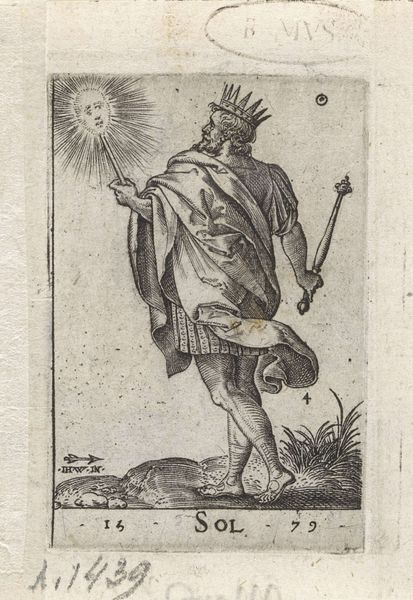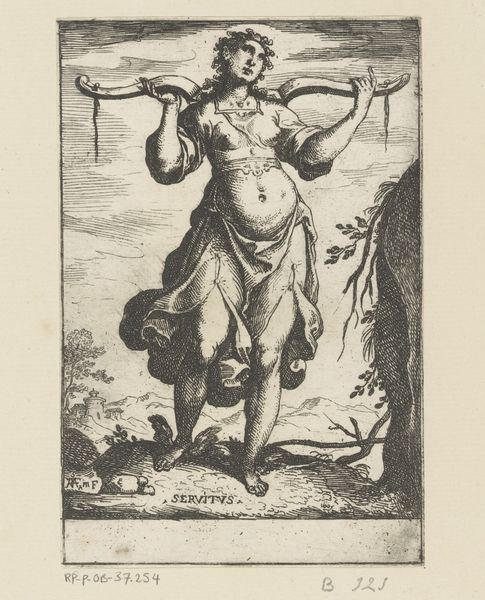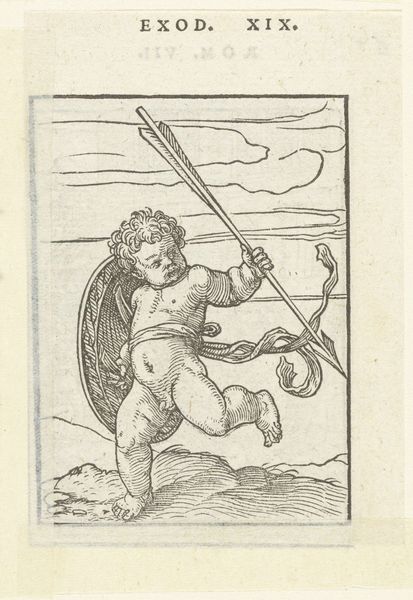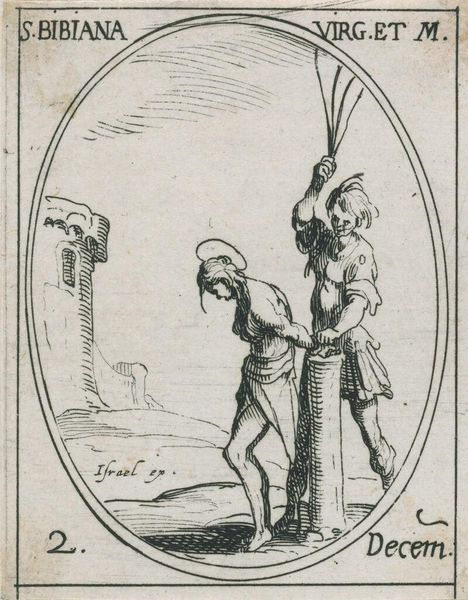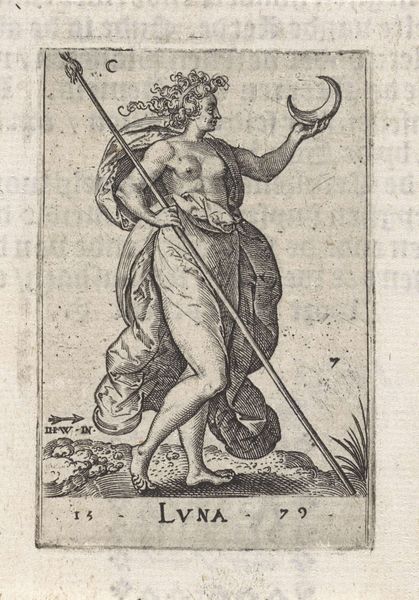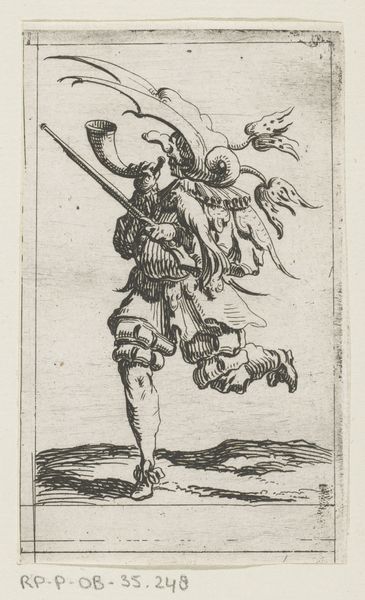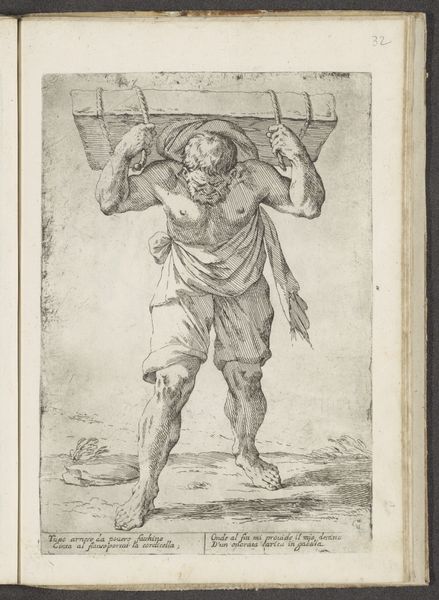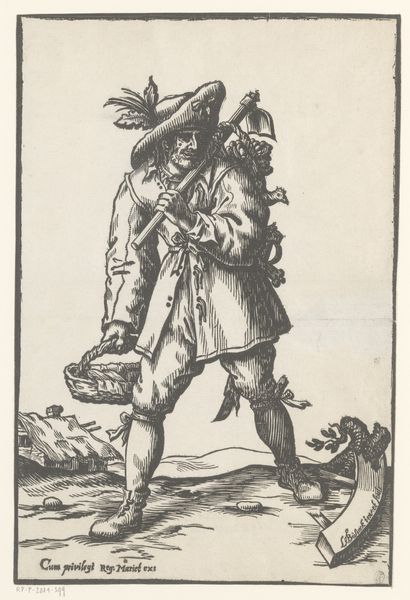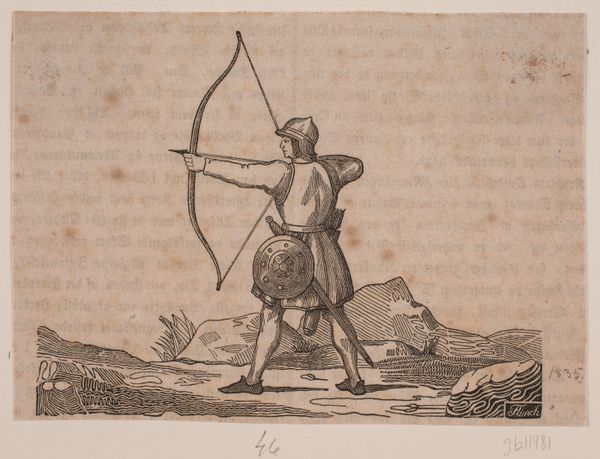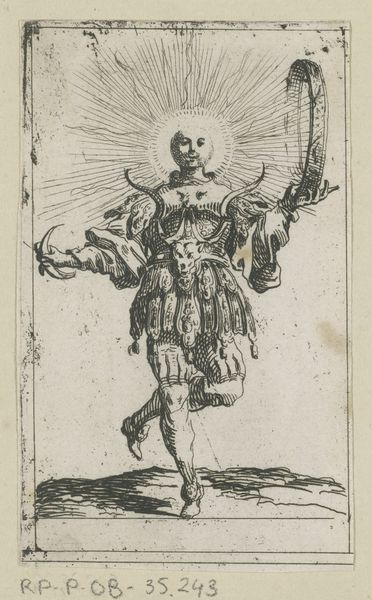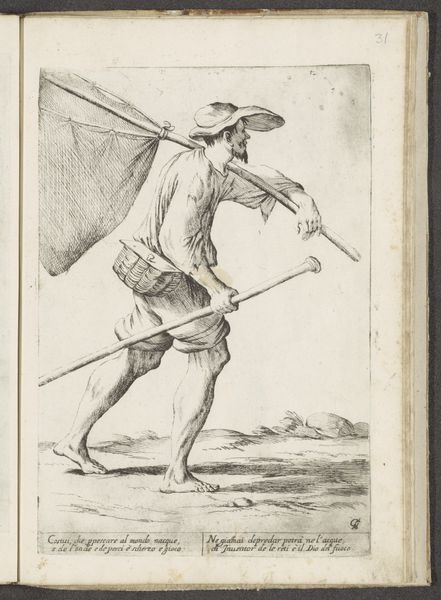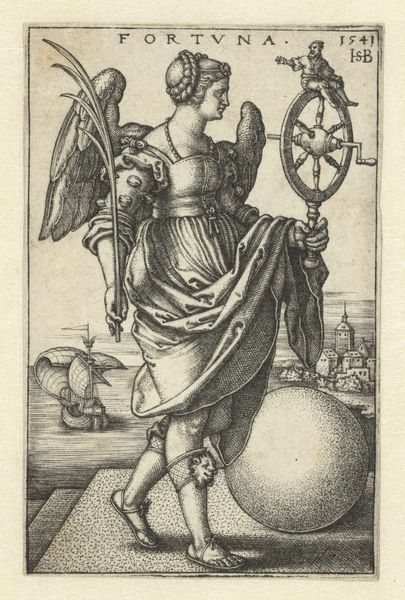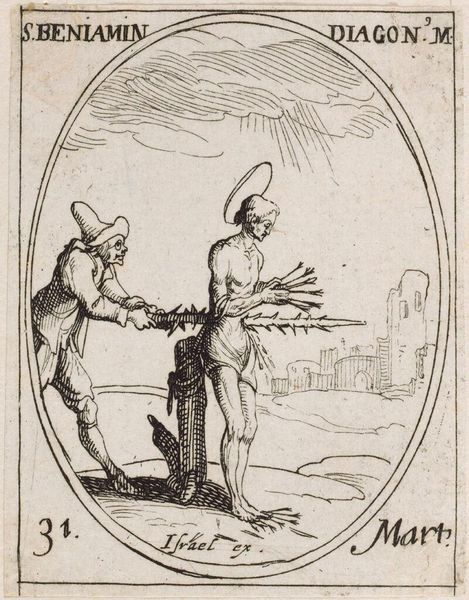
Handelsetiket met Atlas die de wereld op zijn schouders draagt c. 1681 - 1740
0:00
0:00
print, metal, engraving
#
allegory
#
baroque
# print
#
metal
#
landscape
#
figuration
#
engraving
Dimensions: height 94 mm, width 54 mm
Copyright: Rijks Museum: Open Domain
Editor: This is "Handelsetiket met Atlas die de wereld op zijn schouders draagt," or "Trade card with Atlas holding the world on his shoulders," made between 1681 and 1740 by Isaac Vincentsz. van der Vinne. It's a small print, an engraving on metal, and it depicts Atlas holding up the world. I’m immediately struck by the image's raw, almost brutal feel given the labor involved in creating this matrix for reproduction. What's your take on it? Curator: It's a fascinating object, especially when we consider its purpose as a trade card. Let’s consider its function. As a mode of commercial inscription. Engraving allowed for relatively inexpensive duplication and distribution. How might its message regarding labor, responsibility, and the weight of the world relate to the product it advertised, the specific social-economic-political positionality it hoped to claim? Editor: That's interesting. I hadn’t really thought about the engraving process itself in relation to the image. Is Atlas meant to be analogous to the merchant shouldering global trade? Curator: Precisely! The image visualizes not only the global reach of commerce but also the very labor of producing and distributing it. The act of creation – carving into metal, pressing prints – is literally mirrored by the figure carrying the weight of the globe. It asks us to contemplate who shoulders that responsibility. Editor: So, this image speaks not only of the burdens of commerce but also hints at how those burdens are materially produced? Curator: Exactly. Consider the wider social implications embedded within such an object. It highlights class hierarchies in Dutch trade while simultaneously attempting to blur the lines between artistry and manual labour through commercial practices. What have you learned? Editor: I see the piece now in a completely different light, not just as a mythological figure, but also a potent representation of the intersection between labour, materials, and trade. Curator: Indeed, every element underscores not only representation but material culture.
Comments
No comments
Be the first to comment and join the conversation on the ultimate creative platform.

